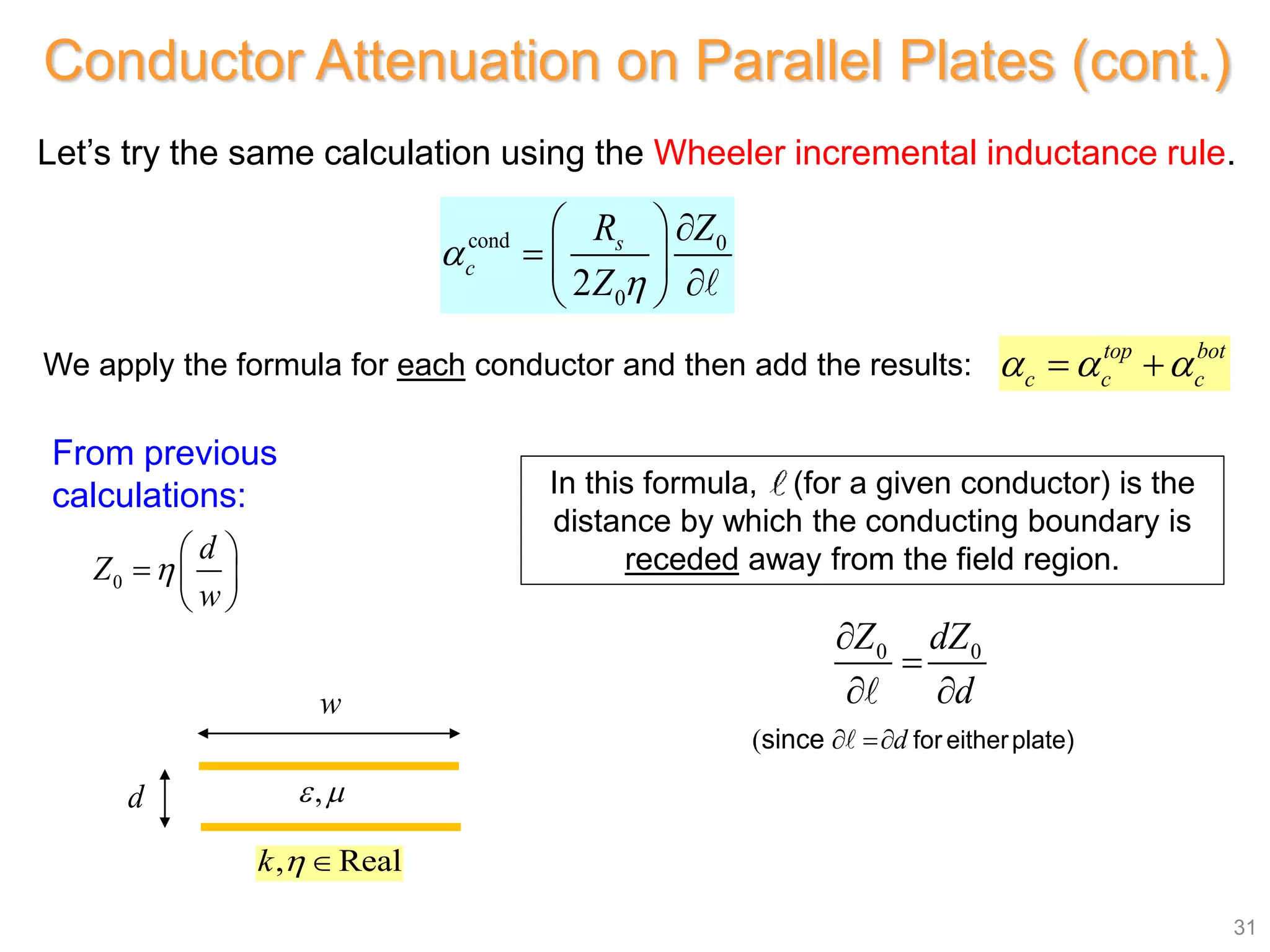- The document discusses the transverse electromagnetic (TEM) mode in a parallel-plate waveguide structure.
- A TEM mode can propagate between the parallel plates, with the electric and magnetic fields confined between the plates. The fields are independent of the propagation direction z.
- Expressions are derived for the voltage, current, characteristic impedance, and power flow of the TEM transmission line mode between the plates.
- Higher order transverse magnetic (TM) modes are also possible, where the magnetic field has only a z-component. The eigenvalue equation for these modes is presented.




































